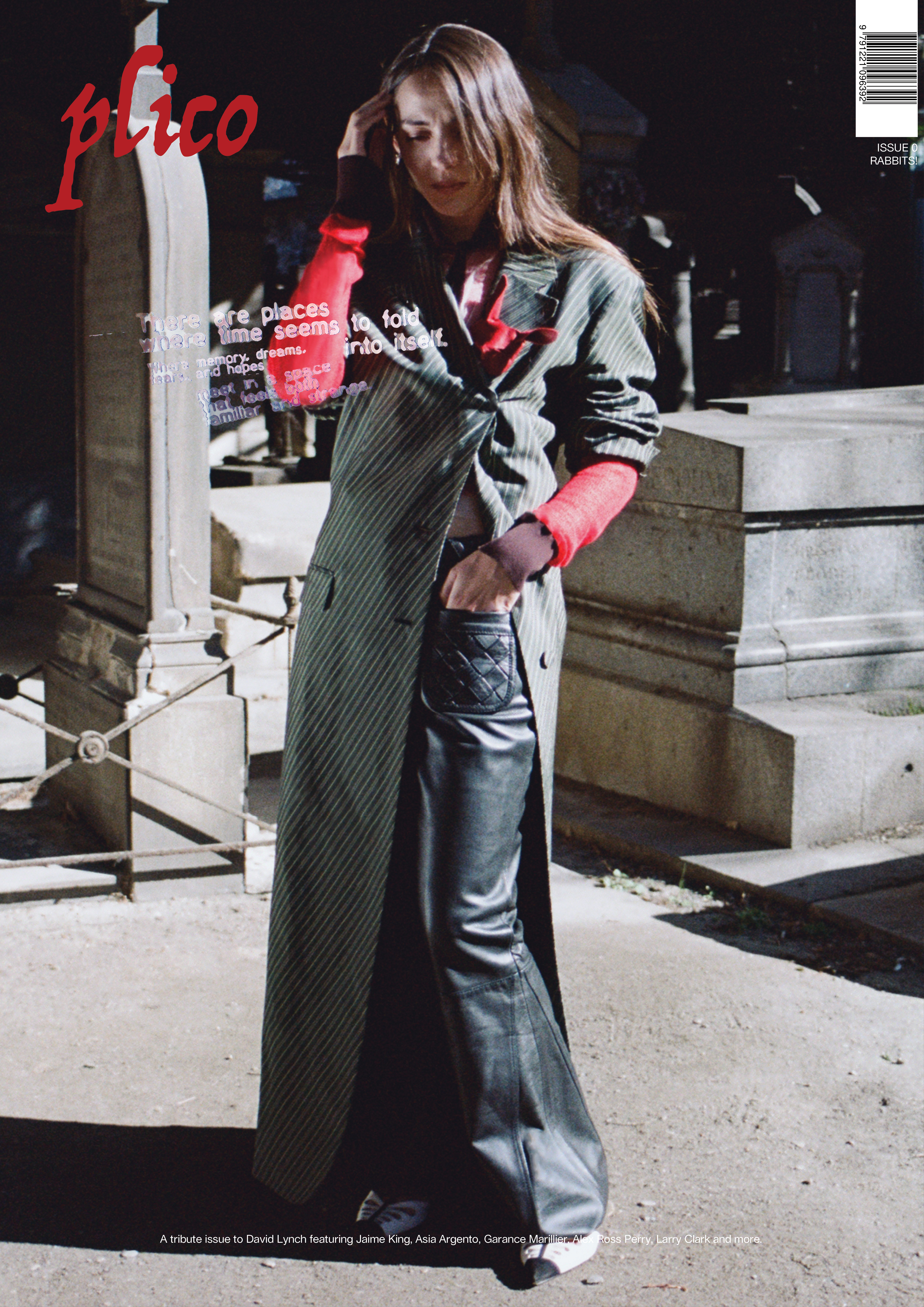
Testo prova
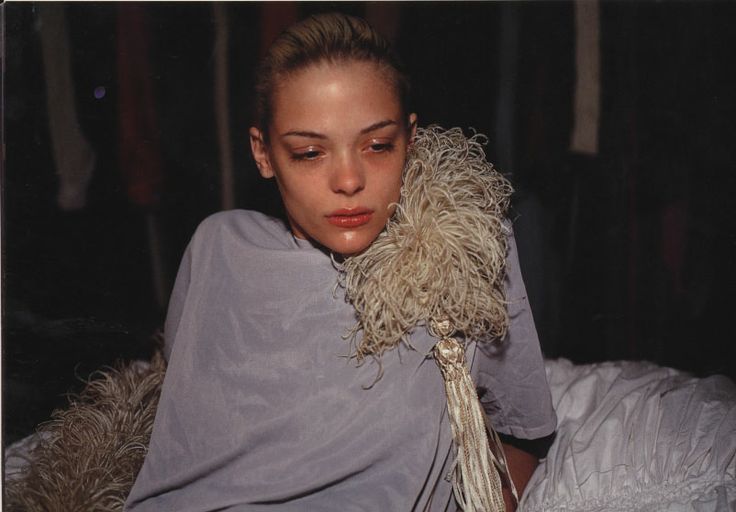
interview by sonia alipio
S: Plico emerged from a desire to rediscover cinema in a more traditional way while carving out a space for those who seek more than just aesthetically pleasing films…
CMA: It all began in 2018 when I came across pages on Tumblr that shared screenshots from movies…
S: Plico emerged from a desire to rediscover cinema in a more traditional way…
CMA: It all began in 2018 when I came across pages on Tumblr…
With roles ranging from the cult phenomenon Raw to the biopic Marinette, French actress Garance Marillier has built a career defined by transformation, intensity, and fearlessness.
Ahead of the release of Bunnies, a project that navigates the liminal space between dream and reality, Plico sat down with Marillier to talk about metamorphosis, discomfort as a creative tool, and the lasting influence of David Lynch.
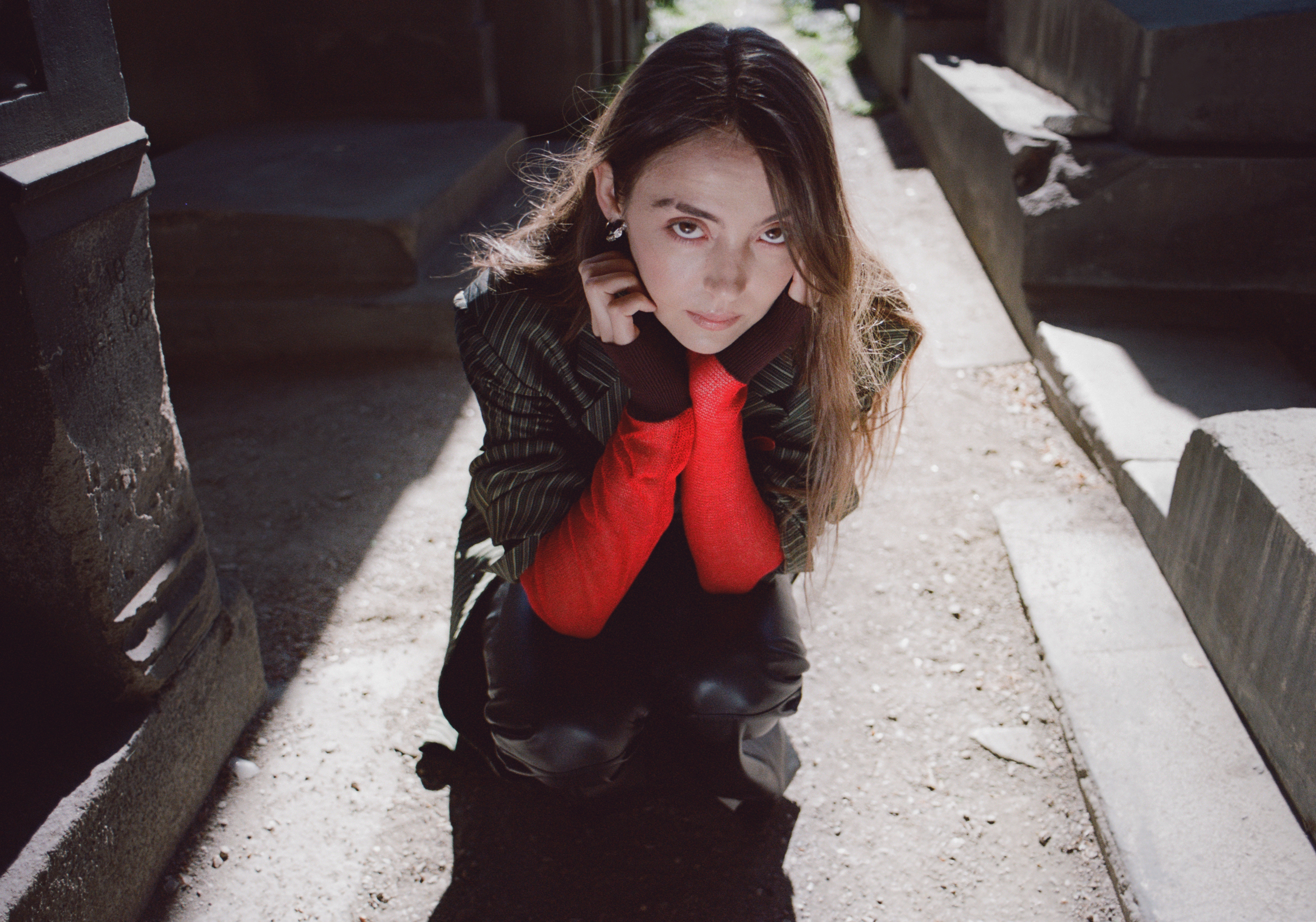
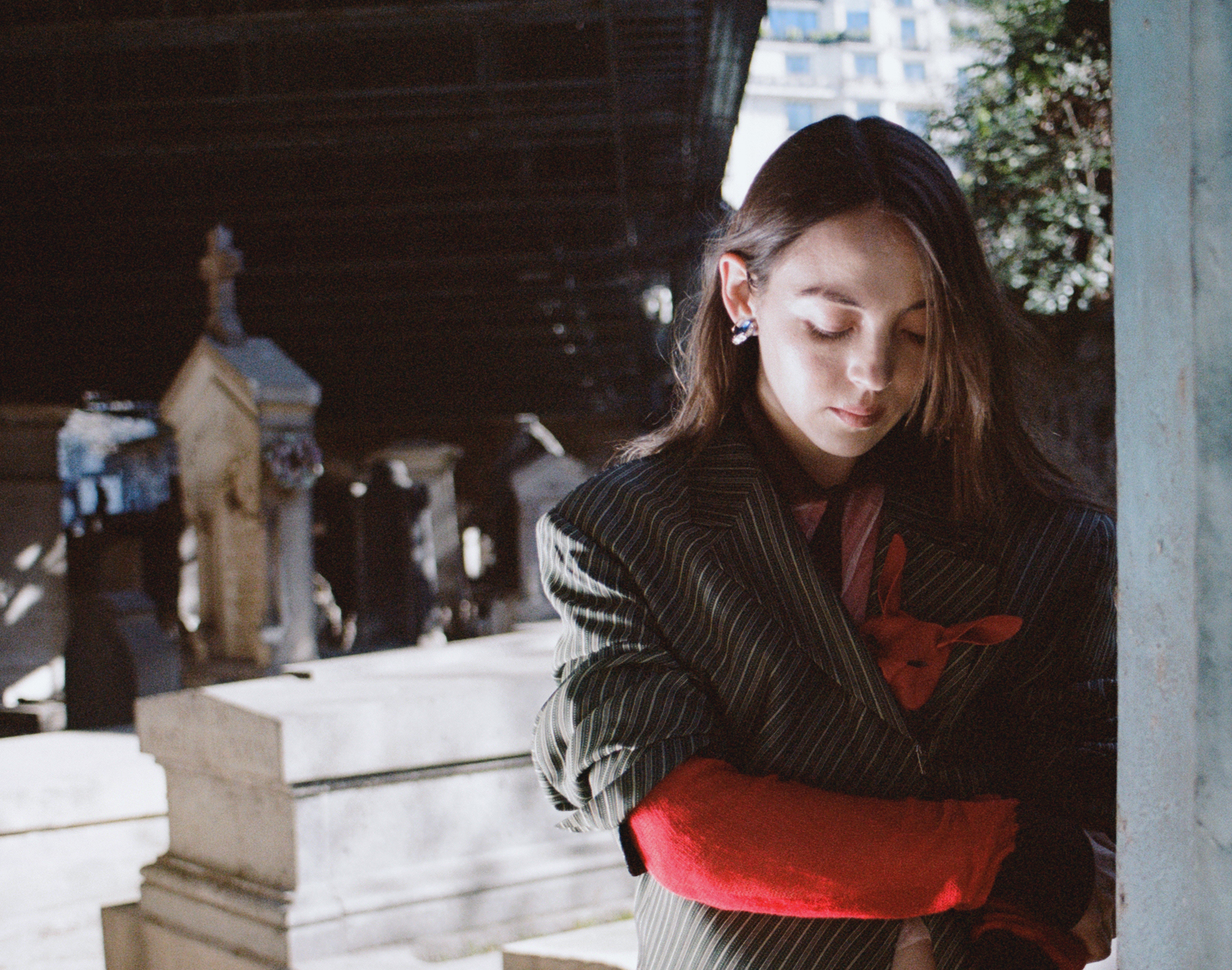
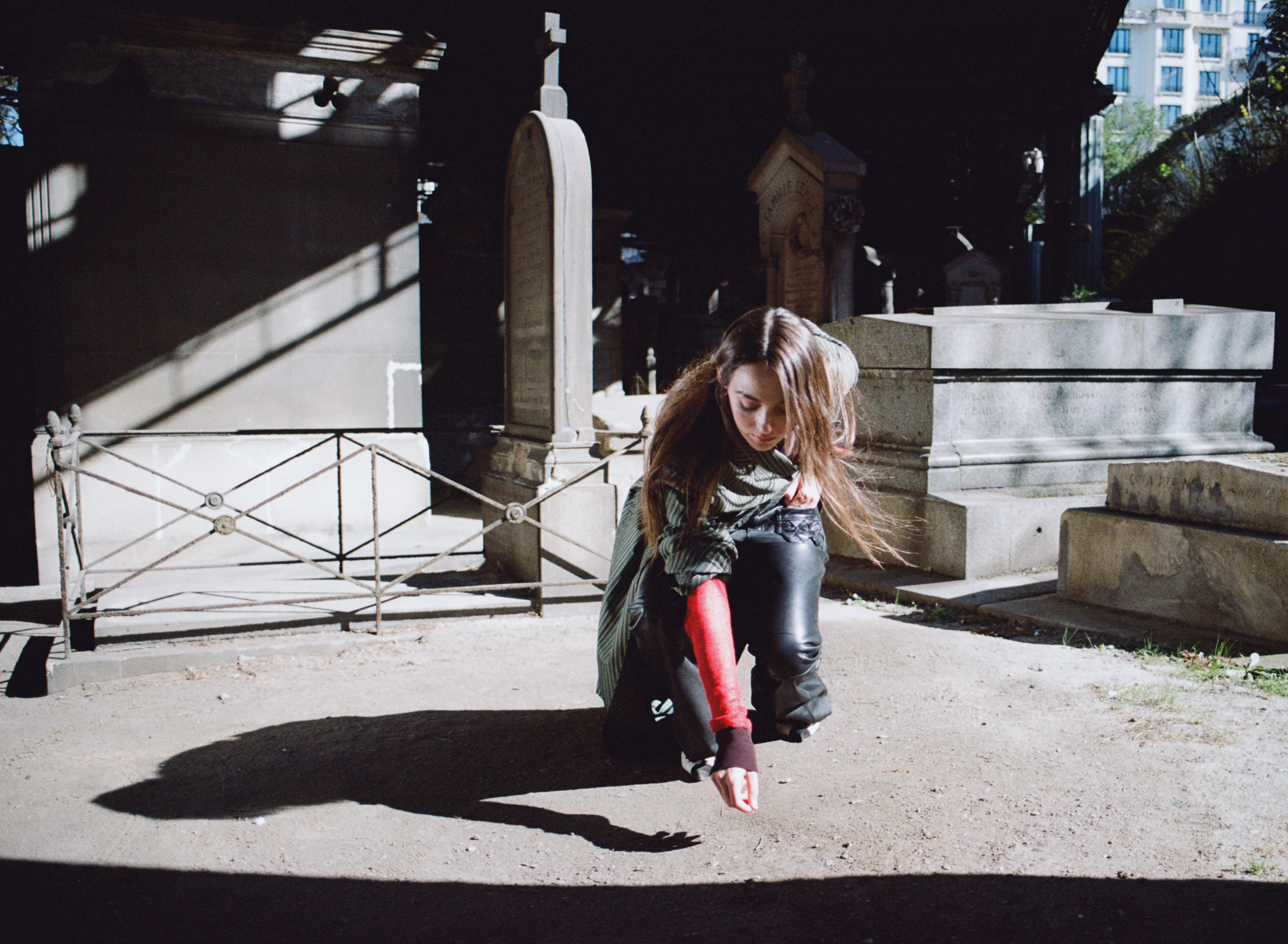

Coat DRIES VAN NOTEN Pants ZADIG & VOLTAIRE
In Raw, your character undergoes an intense and disturbing transformation.
On a personal level, how did you experience the boundary between fear and desire - or between reality and fiction during the shoot?
On a personal level, how did you experience the boundary between fear and desire - or between reality and fiction during the shoot?
For me, roles like that are mostly about technical discipline: preparing well, working with the body, and finding the character’s internal rhythm. Those aspects guided me far more than reflecting on my own personal emotions at the time.
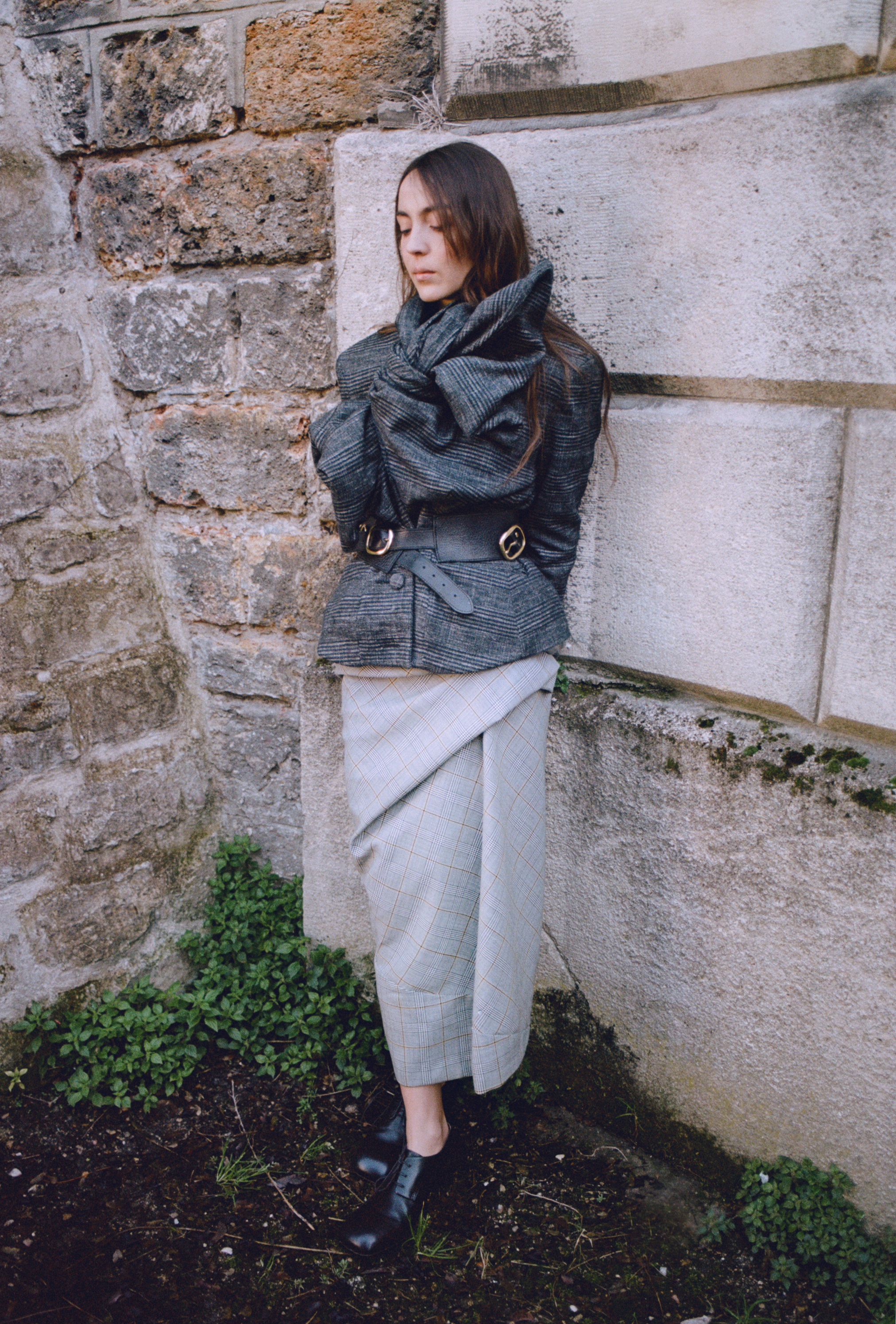
Jacket JASON CLARK Skirt JASON CLARK Shoes MARSELL
You’ve mentioned not being a fan of horror films, yet you’ve taken on deeply unsettling roles.
How do you relate to the unknown and to unease in everyday life, and how has that influenced your preparation?
How do you relate to the unknown and to unease in everyday life, and how has that influenced your preparation?
I think what’s really exciting is taking the risk—the jump into the unknown, out of your comfort zone. That’s where something real can happen. Discomfort is actually a creative space for me. I don’t try to avoid it; I lean into it and move through it. Preparing for a role means accepting that you won’t control or understand everything right away. And when I start to feel the character in a natural, organic way—not just intellectually—that’s when the magic happens. I feel most in my element somewhere between chaos and calm
Transformation is a recurring theme in your roles—from Junior to Raw to Marinette. How do you perceive the concept of metamorphosis in your career and personal growth?
I love playing characters who change physically—through body or gesture. But physical transformation is only the surface. What really interests me is what happens underneath: the psychological journey, the contradictions, the arc. Metamorphosis isn’t just about appearance; it’s an internal shift.
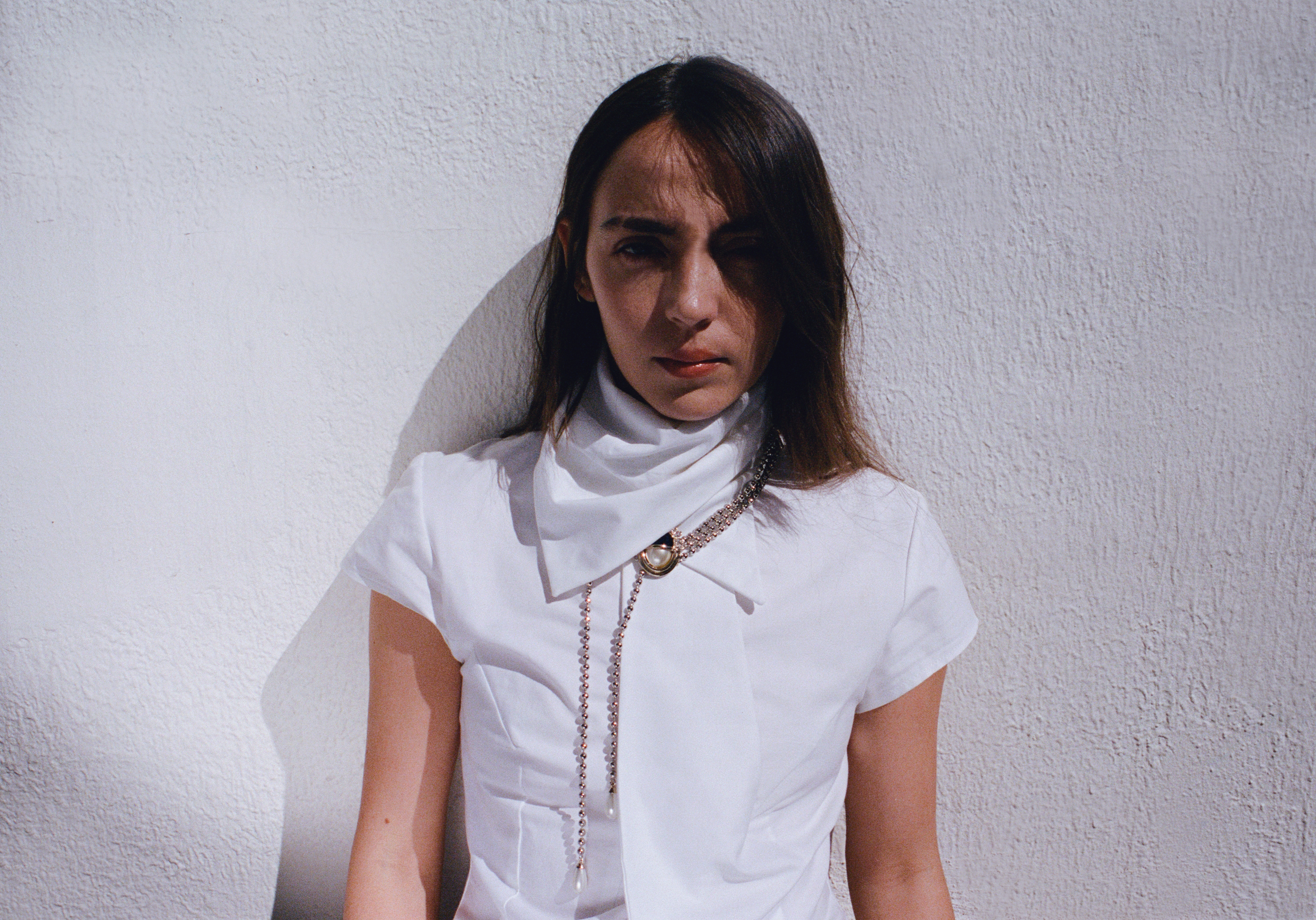
Shirt FENDI Necklace VIVETTA
CONVERSATIONS
Interview by Niccolò Sandroni
I’D LIKE TO BREAK THAT NOTION. THAT YOU HAVE TO SUFFER, THAT YOU NEED TO LIVE A TERRIBLE LIFE, BE PERVERSE, AN ALCOHOLIC, AN ADDICT TO CREATE YOUR ART.
Interview by Niccolò Sandroni
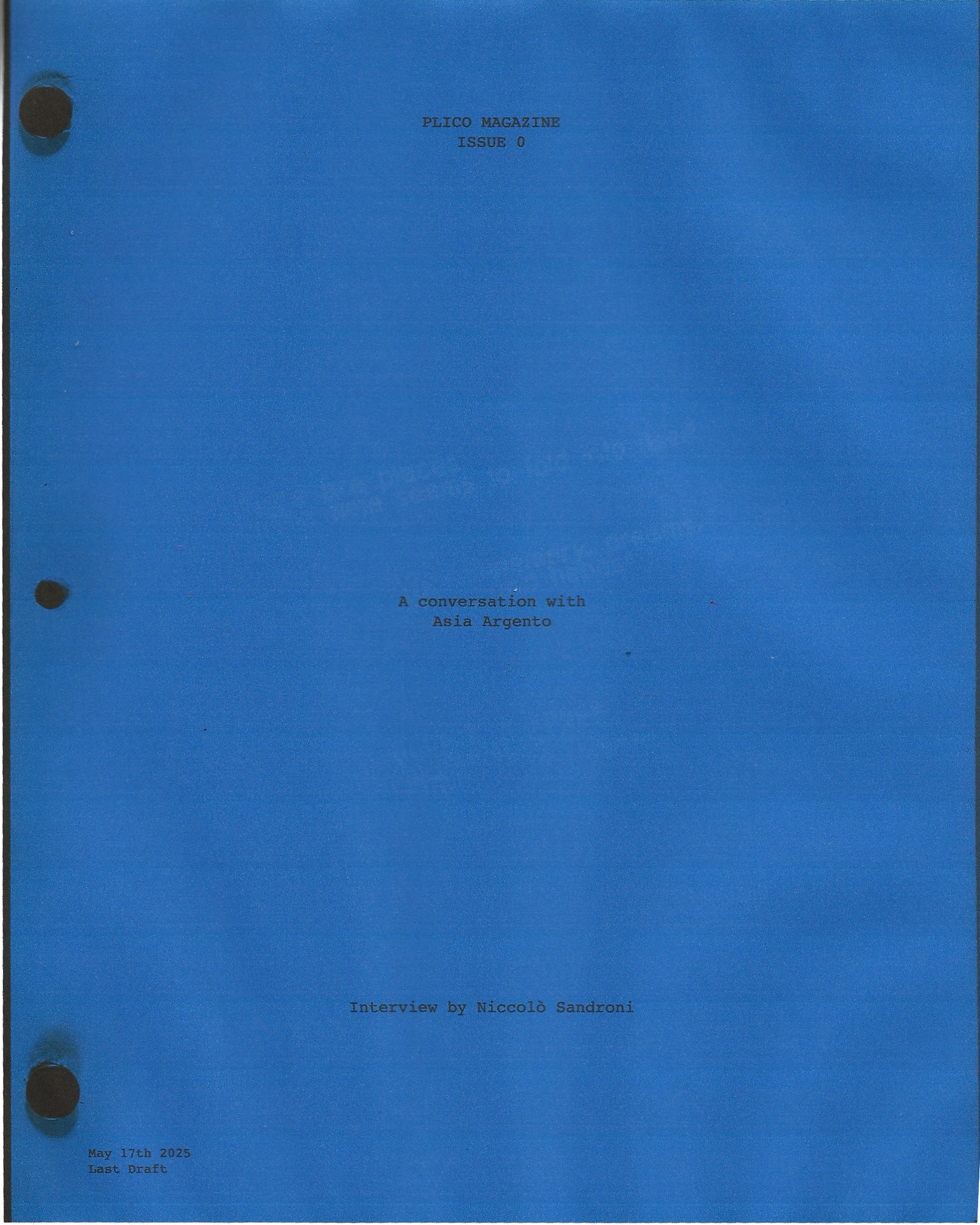
Cinema, dreams, childhood, art, creativity, but above all, life. Asia Argento is carefully shaping a new chapter of her life.
The first film I remember seeing with Asia Argento was Perdiamoci di vista (1994) directed by and starring Carlo Verdone. Over the years, I grew to admire her especially in her father Dario’s films among which I’ll allow myself to praise Trauma (1993). To those I add New Rose Hotel (1998) by Abel Ferrara, where she stars alongside Willem Dafoe and Christopher Walken, and why not, even the action movie xXx (2002) by Rob Cohen with Vin Diesel and Samuel L. Jackson. Regarding her directorial work, my personal favorite is Misunderstood (2014).
Some months ago, when the idea of doing this interview came up, I decided to read her autobiography Anatomia di un cuore selvaggio, and without a doubt, this is the work by Asia Argento I love most and never stop recommending to others. While reading, I was struck by the strength of every page. Honest, at times piercing words, capable of surgically describing emotions that often feel elusive. I decided to draw inspiration from this book when writing the questions for our meeting.
From the role of the artist-parent to identifying the most powerful fuel for expressing our art, passing through the current state of cinema and the meaning of dreams, one of the central themes of this debut issue of Plico Magazine. Ten questions to rediscover Asia Argento: a different kind of girl, an untamable spirit, and now more than ever, a woman conscious of herself.
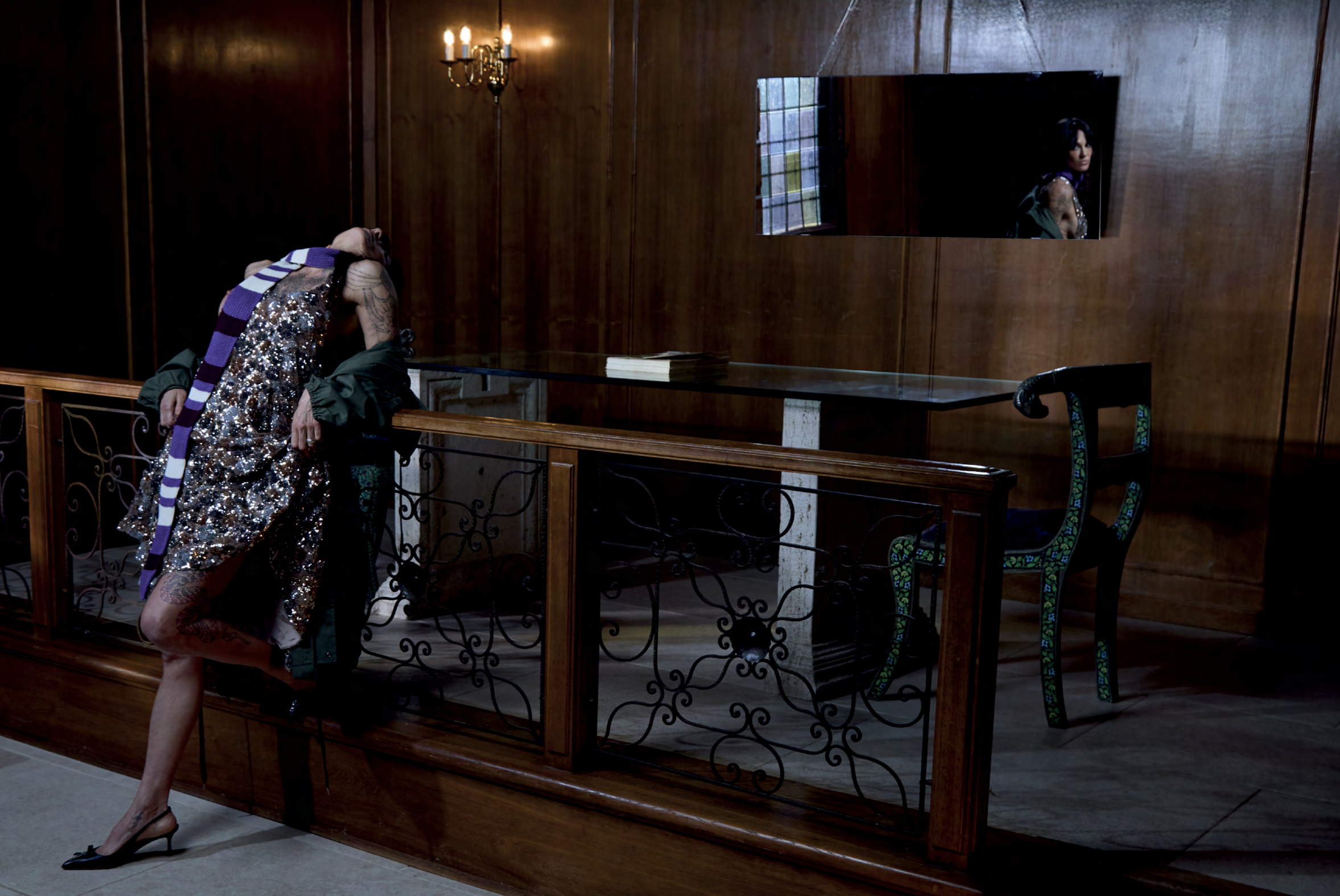 Asia is wearing a N21 full look
Asia is wearing a N21 full look
NS:
Asia, let me quote your autobiography. About your parents, you write: “On one hand this absurd parental ambition, on the other, throwing themselves into this mission while insisting on remaining whimsical artists doing whatever they please without giving up any of their madness. In their own way, they gave it their all: two exceptional people, and for that, also two complete egotists.” Is this the eternal dilemma of the artist-parent being trapped in that existential dichotomy?
AA:
Having a family and being an artist, those two things cannot coexist. It’s impossible. The artist is egocentric and therefore prioritizes their own needs, primal instincts, desires, ambition, the obsession with their work. To be an artist, you have to be incredibly obsessed, especially at the level of my father, but also my mother, who was number one in Italian theater, always on tour with major productions and directed by the greatest directors of that time.
As for my experience, when I became a mother, I saw that at first it was “manageable” to have a career and a daughter, because she was little and even though I traveled all over the world, we were together. When she started school, that’s when the “problems” began, because even then I was living mainly in America, but also working in France. With my second child, I started asking my agents different questions about film productions. Before, I’d ask: What’s the film? Who’s directing it? After that, I’d ask: How long will it take? Where’s it being shot? How much does it pay?
My work took a backseat but it was a natural evolution, because my kids came first. And maybe that’s exactly because of what I went through, with this enormous sense of loneliness, abandonment, love given conditionally. I won’t lie; I’ve felt and still feel some regret at times, and I fall into the trap of “I could’ve... I should’ve...”. That’s a real danger especially if you identify with your work, your success. But I realized the universe paid me back through what I tried to be: the best mother I could be.
Having a family and being an artist, those two things cannot coexist. It’s impossible. The artist is egocentric and therefore prioritizes their own needs, primal instincts, desires, ambition, the obsession with their work. To be an artist, you have to be incredibly obsessed, especially at the level of my father, but also my mother, who was number one in Italian theater, always on tour with major productions and directed by the greatest directors of that time.
As for my experience, when I became a mother, I saw that at first it was “manageable” to have a career and a daughter, because she was little and even though I traveled all over the world, we were together. When she started school, that’s when the “problems” began, because even then I was living mainly in America, but also working in France. With my second child, I started asking my agents different questions about film productions. Before, I’d ask: What’s the film? Who’s directing it? After that, I’d ask: How long will it take? Where’s it being shot? How much does it pay?
My work took a backseat but it was a natural evolution, because my kids came first. And maybe that’s exactly because of what I went through, with this enormous sense of loneliness, abandonment, love given conditionally. I won’t lie; I’ve felt and still feel some regret at times, and I fall into the trap of “I could’ve... I should’ve...”. That’s a real danger especially if you identify with your work, your success. But I realized the universe paid me back through what I tried to be: the best mother I could be.
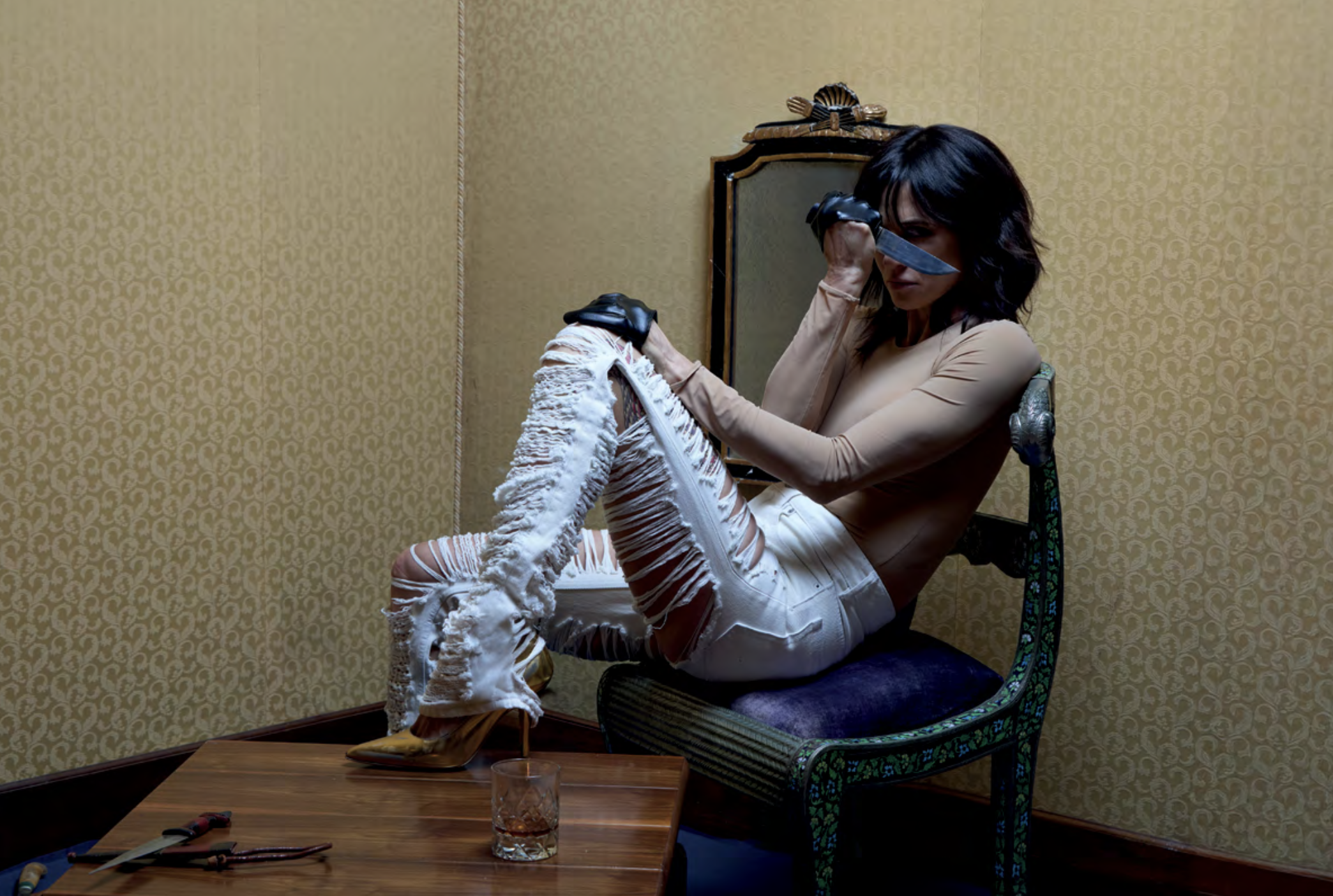 Bodysuit MAISON MARTIN MARGIELA Jeans MM6
Bodysuit MAISON MARTIN MARGIELA Jeans MM6Shoes MM6 Gloves Stylist’s own
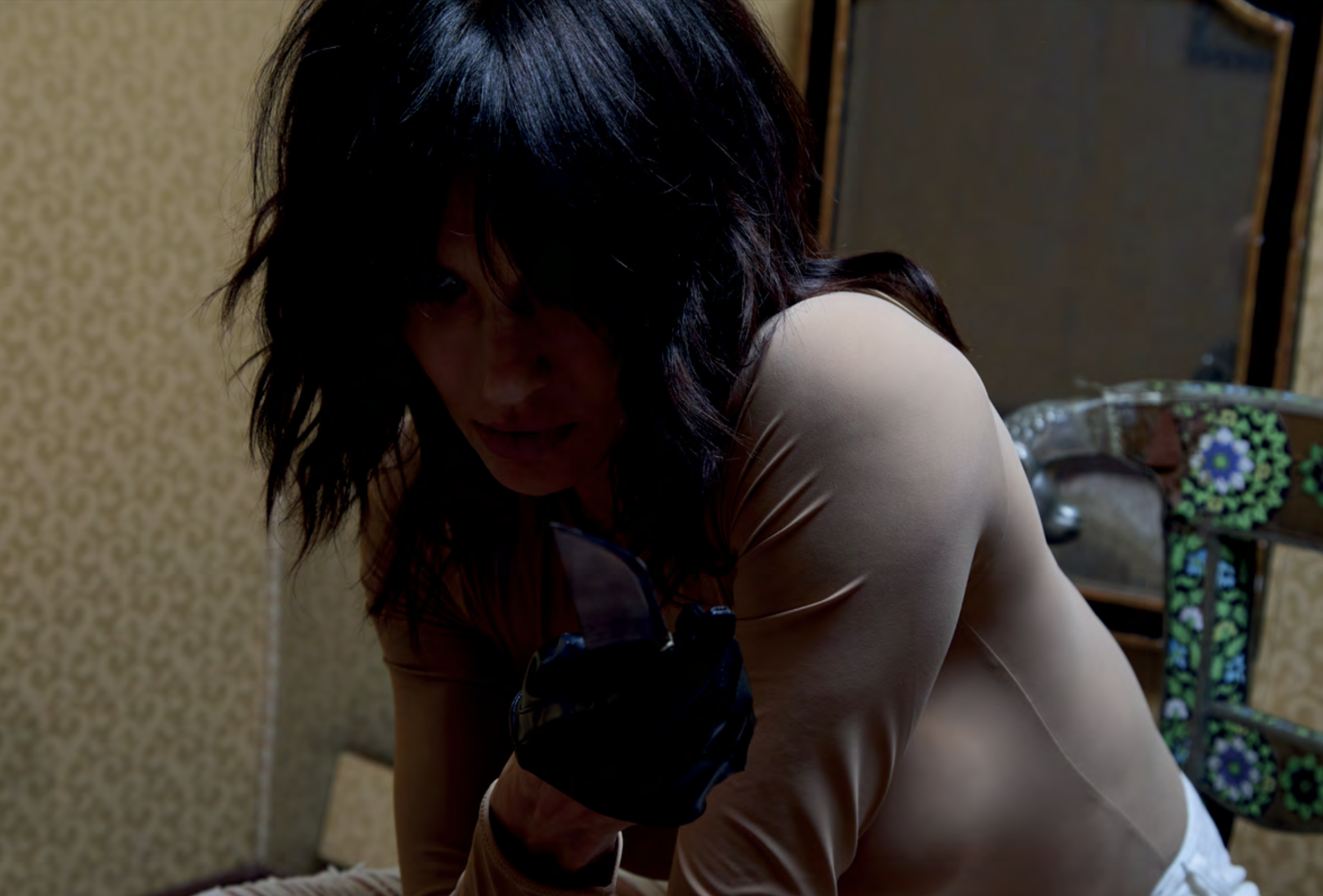
NS: “My childhood was chaos with no anchor points, and I lived without any”. These words remind me of Jane Birkin’s famous quote: “But who wants an easy life? It’s boring”. Is it necessary for something absurd, painful, fantastic, anything but dull stability, to happen in order to trigger an artistic reaction?
AA: I’d like to break that notion. That you have to suffer, that you need to live a terrible life, be perverse, an alcoholic, an addict in order to create your art. We need a healthier world, where mental health is encouraged, where people grow up in better environments, where creativity is like it is for children a joyful, not desperate, thing. I remember when I was a child, creativity was play. As I got older, I tied it to despair, and I drew from my pain, my trauma, thinking filmmaking had to be a sort of psychodrama. But it doesn’t have to be like that.
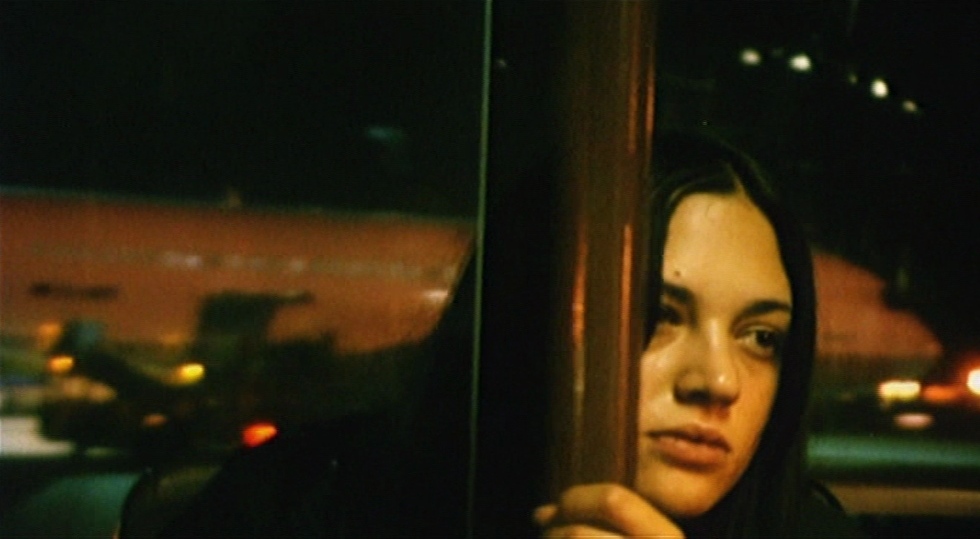
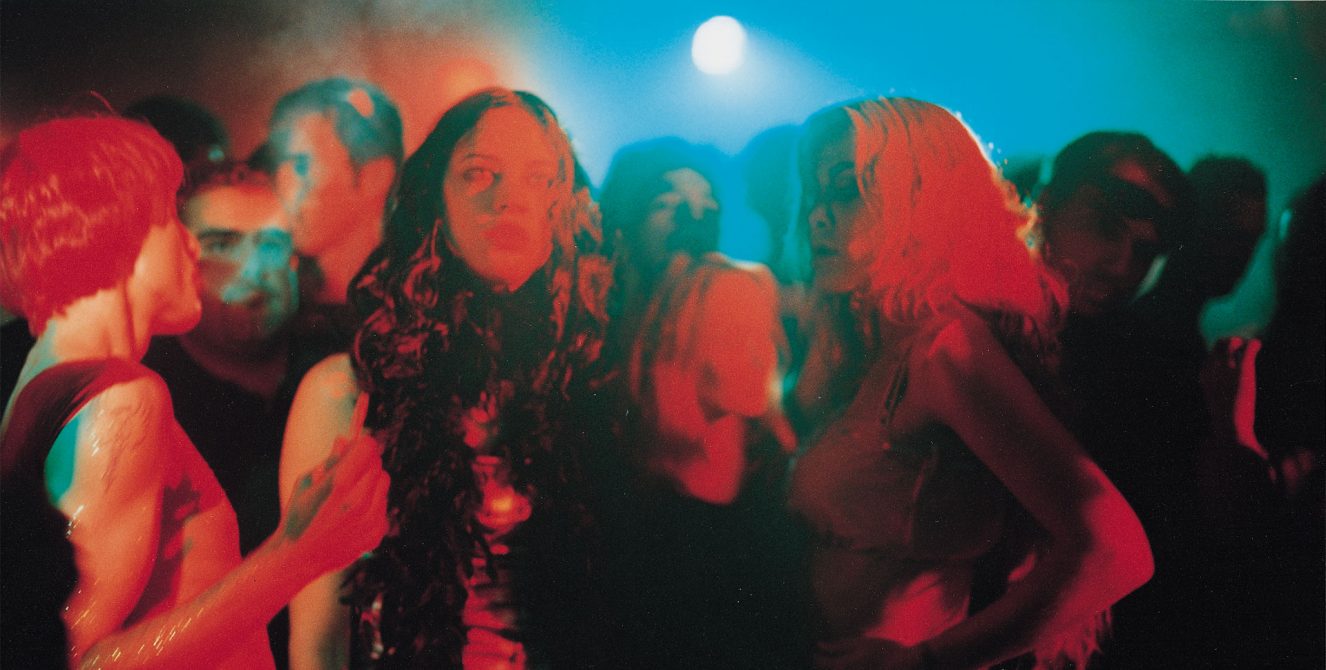
© Scarlet Diva (2000), directed by Asia Argento; produced by Opera Film Produzione; distributed by Minerva Pictures Group (Italy) / Film Movement Classics (North America).
NS:
More and more often, we hear professionals in the film industry speak about exploitation and frustration. The actor, screenwriter, or director is drained - creatively, aesthetically, and humanly - by the demands of production in order to maximize immediate financial returns, often seeing their work altered in the process. Is this a toll that artists inevitably have to pay to bring their art to life? In your case, have you ever had to accept significant changes to your films?
AA:
This is a very relevant topic for me right now. In the past, as a director, I never compromised because my films had modest budgets and the productions were solid. Also, it was a different time for cinema and for audiences going to theaters.
Today, the only truly interesting reality (in Rome) is Cinema Troisi, where young people gather around film retrospectives and discussions. Otherwise, it’s just Hollywood blockbusters that work, like Dune or Marvel films.
Thankfully, there are still some wild cards with their auteur films, like Wim Wenders with Perfect Days (2023). But otherwise, it feels like we have to go back to a different era, to directors who were also friends, like Larry Clark and Harmony Korine with Kids (1995) and Gummo (1997). These stories inspired me at the time: films that would be unthinkable today but were once praised, understood, and loved. They became cult classics not because they chased profit (and even if they had, the money doesn’t go to the director or writer, it goes to the producer, which is fair, since they invested and believed in the stories).
I want to return to that time, to aim even lower than I did in my past experiences as a director. Today, if you have a good story and a director who knows how to tell it, like Tangerine (2015) by Sean Baker shot on an iPhone 5s during magic hour with incredible lighting, you can create something beautiful that lasts.
Read more in the printed issue.
Today, the only truly interesting reality (in Rome) is Cinema Troisi, where young people gather around film retrospectives and discussions. Otherwise, it’s just Hollywood blockbusters that work, like Dune or Marvel films.
Thankfully, there are still some wild cards with their auteur films, like Wim Wenders with Perfect Days (2023). But otherwise, it feels like we have to go back to a different era, to directors who were also friends, like Larry Clark and Harmony Korine with Kids (1995) and Gummo (1997). These stories inspired me at the time: films that would be unthinkable today but were once praised, understood, and loved. They became cult classics not because they chased profit (and even if they had, the money doesn’t go to the director or writer, it goes to the producer, which is fair, since they invested and believed in the stories).
I want to return to that time, to aim even lower than I did in my past experiences as a director. Today, if you have a good story and a director who knows how to tell it, like Tangerine (2015) by Sean Baker shot on an iPhone 5s during magic hour with incredible lighting, you can create something beautiful that lasts.
Read more in the printed issue.
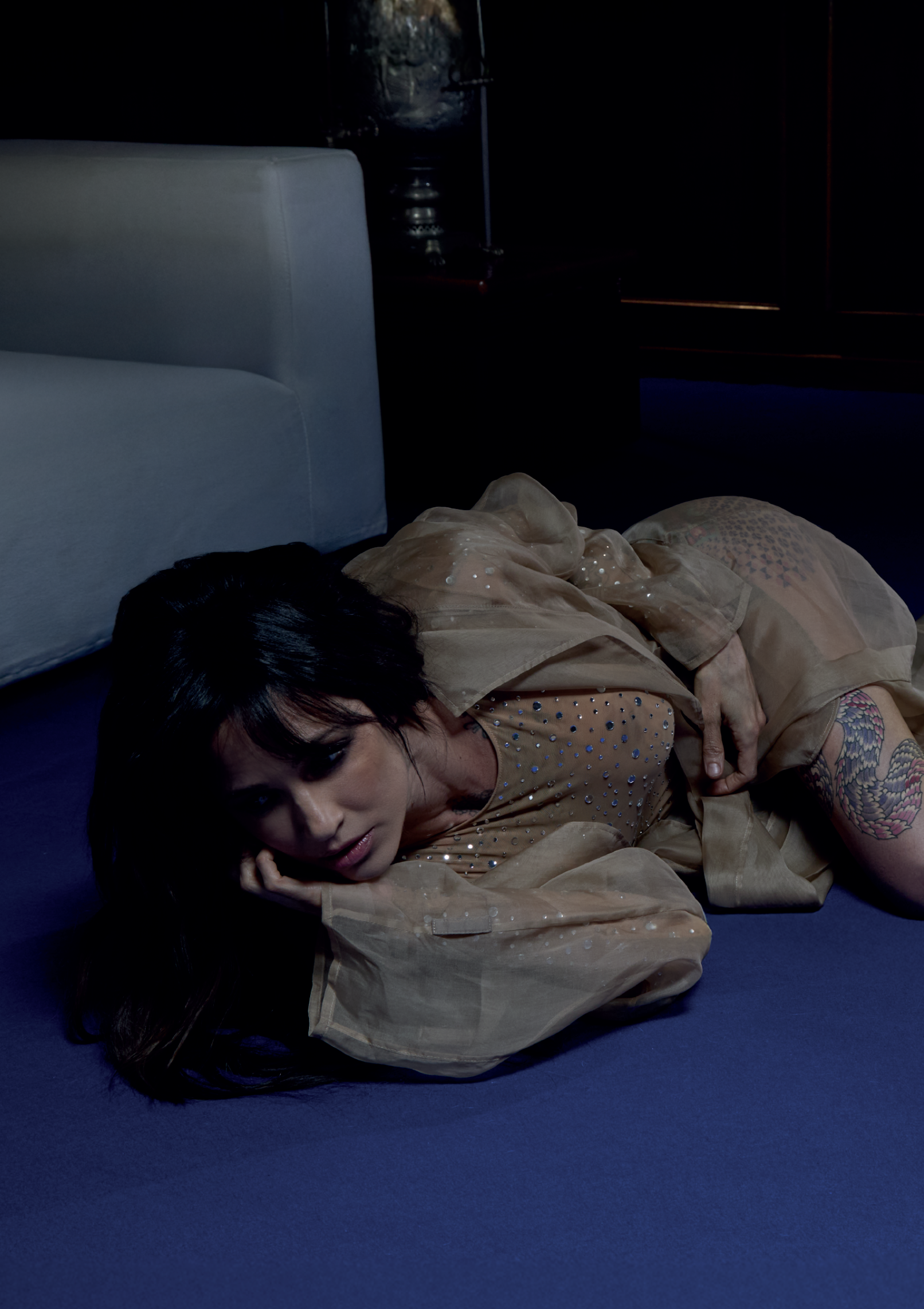
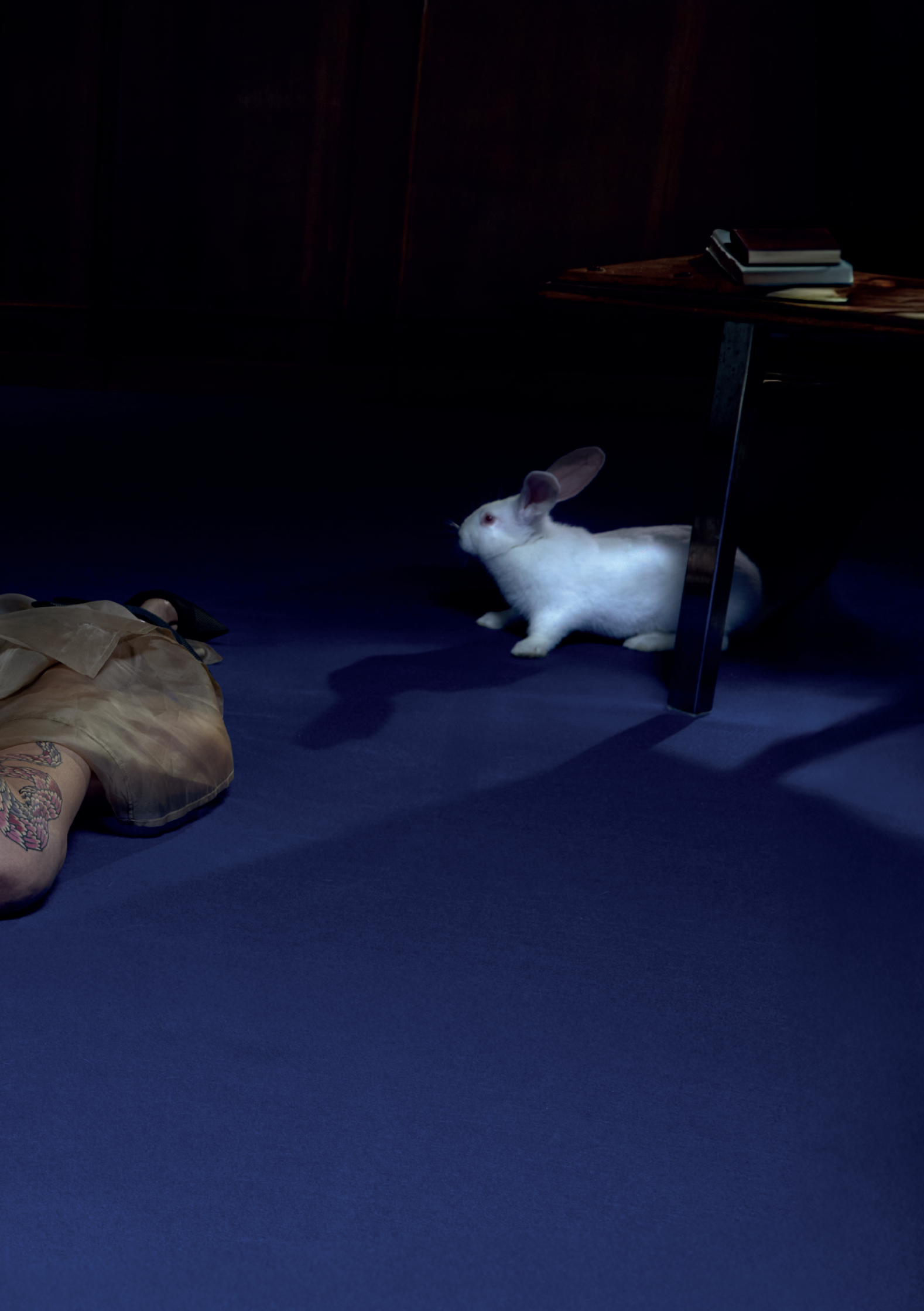 Trench coat SAGIO
Trench coat SAGIOBodysuit DES PHEMMES
PRODUCTION: PANORAMIC STUDIO
TALENT: ASIA ARGENTO
PHOTOGRAPHER AND DIRECTOR: ANDREA LAMEDICA
DOP: ELISA FIORITTO
1AC: PIETRO GOBBI
STYLIST: SONIA ALIPIO
MAKE UP ARTIST: GAIA DELLAQUILA
HAIR STYLIST: ANTONIO FIDATO
SET DESIGNER: FLAVIA MANACORDA
PHOTOGRAPHER ASSISTANT: ROBERTO PALATTELLA
STYLING ASSISTANTS: NES KALI, MARGHERITA MANGANI
TALENT: ASIA ARGENTO
PHOTOGRAPHER AND DIRECTOR: ANDREA LAMEDICA
DOP: ELISA FIORITTO
1AC: PIETRO GOBBI
STYLIST: SONIA ALIPIO
MAKE UP ARTIST: GAIA DELLAQUILA
HAIR STYLIST: ANTONIO FIDATO
SET DESIGNER: FLAVIA MANACORDA
PHOTOGRAPHER ASSISTANT: ROBERTO PALATTELLA
STYLING ASSISTANTS: NES KALI, MARGHERITA MANGANI
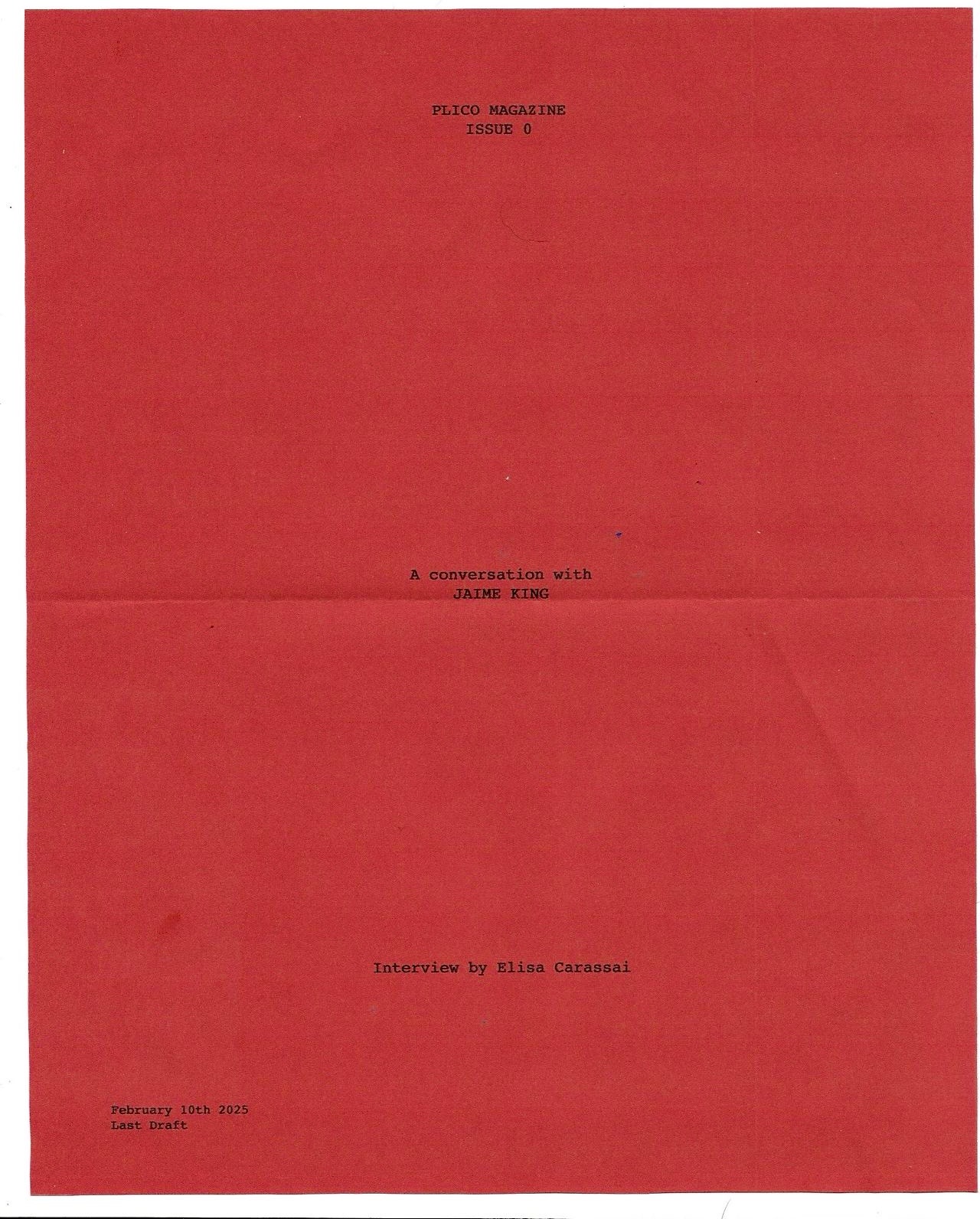
CONVERSATIONS
She first rose to fame as a top model in the late ‘90s, then seamlessly transitioned into acting with standout performances in Sin City (2005), Pearl Harbor (2001), and My Bloody Valentine (2009). Over the years, Jaime has captivated audiences with her emotional range and magnetic screen presence. But her journey doesn’t end there- she’s also made a name for herself as a producer, bringing sharp creative insight to the projects she helps shape. In this conversation, we explore the unexpected turns of her career, the behind-the-scenes forces that drive her artistic vision, and what lies ahead as she continues to break new ground both in front of and behind the camera.
TO ME THE MOST REWARDING THING IS TELLING THE TRUTH THROUGH BEAUTY EMBRACING THE MESSINESS OF LIFE AND NOT BEING AFRAID TO SHOW THAT.
Interview by Elisa CarassaiShe first rose to fame as a top model in the late ‘90s, then seamlessly transitioned into acting with standout performances in Sin City (2005), Pearl Harbor (2001), and My Bloody Valentine (2009). Over the years, Jaime has captivated audiences with her emotional range and magnetic screen presence. But her journey doesn’t end there- she’s also made a name for herself as a producer, bringing sharp creative insight to the projects she helps shape. In this conversation, we explore the unexpected turns of her career, the behind-the-scenes forces that drive her artistic vision, and what lies ahead as she continues to break new ground both in front of and behind the camera.
EC: Growing up in Nebraska, did you ever imagine a future in Hollywood? Or was that something that unfolded unexpectedly? How did your dreams evolve along the way?
JK: Growing up in Nebraska, the sky felt endless. There were no tall buildings, and I think that sense of open space really allowed my imagination to thrive. From an early age, I was deeply drawn to literature and art. I studied hard and was always experimenting with different creative forms.
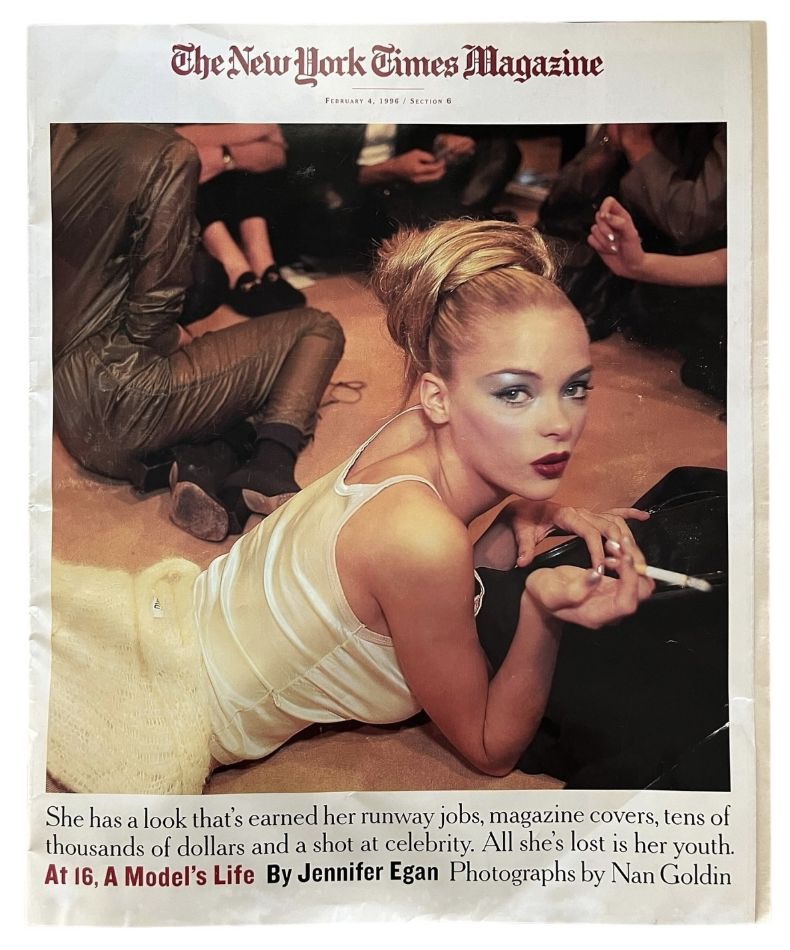 James is a Girl - Nan Goldin (1996)
James is a Girl - Nan Goldin (1996)Jaime King shot by Nan Goldin for the cover story of The New York Times Magazine on February 4th 1996.
JK: I remember discovering Nan Goldin’s work when I was around nine. Access to artist books was limited where I lived, so I begged my parents to save up so we could travel to a bigger city just to buy The Ballad of Sexual Dependency. That moment made me realize I had outgrown my small-town surroundings
![]()

Jaime King by Nan Goldin for The New York Times Magazine, 1996
EC:
Since you began your career as a model before transitioning into acting, did your perspective on fashion shift once you entered Hollywood?
JK: To me, all art is connected. Starting in fashion at such a young age, my main goal was to learn from the masters, something I didn’t have access to growing up. My mother was a seamstress, so I’ve always had this deep curiosity about how things are made, whether it’s a couture gown, fixing a carpet, or solving creative problems in general. I started modeling at 13 and was lucky to work with some of the legends in the industry. By 18, I felt I had learned everything I could from that world, and I was ready to follow my real passion - filmmaking. Fashion and film both deal with movement and life, but fashion is often frozen in a single image. I wanted to push beyond that and explore storytelling in motion, even though, at the time, making that leap was pretty rare. Read more in the printed issue.
BUY JAIME KING COVER PLICO ISSUE #0
![]()

CREDITS:
PRODUCTION: PUBLIC SPACE STUDIO / Monika Martinez
TALENT: JAIME KING
PHOTOGRAPHER: JASON RENAUD
STYLIST: SONIA ALIPIO
MAKE UP ARTIST: LILLY KEYS
HAIR STYLIST: ERICKA VERRET
PHOTOGRAPHER ASSISTANT: SIYON FOSTER
STYLING ASSISTANTS: RON BEN, CHAD SERRANO, KAI VERRET
PRODUCTION: PUBLIC SPACE STUDIO / Monika Martinez
TALENT: JAIME KING
PHOTOGRAPHER: JASON RENAUD
STYLIST: SONIA ALIPIO
MAKE UP ARTIST: LILLY KEYS
HAIR STYLIST: ERICKA VERRET
PHOTOGRAPHER ASSISTANT: SIYON FOSTER
STYLING ASSISTANTS: RON BEN, CHAD SERRANO, KAI VERRET

